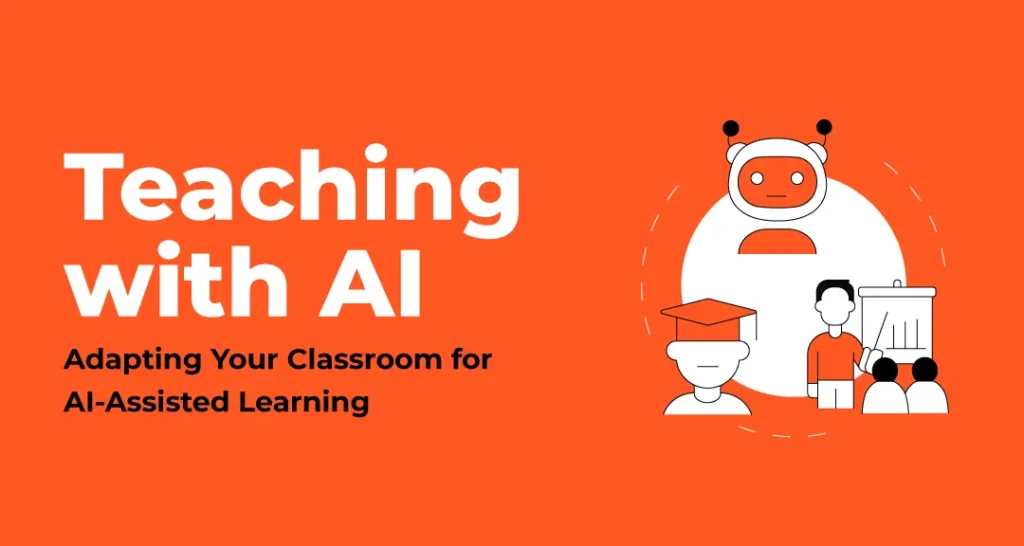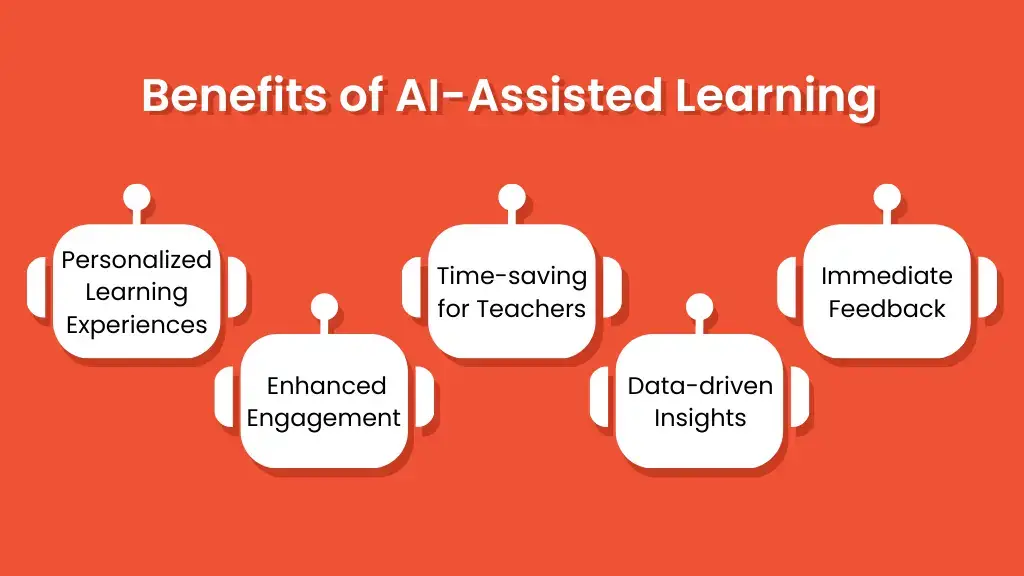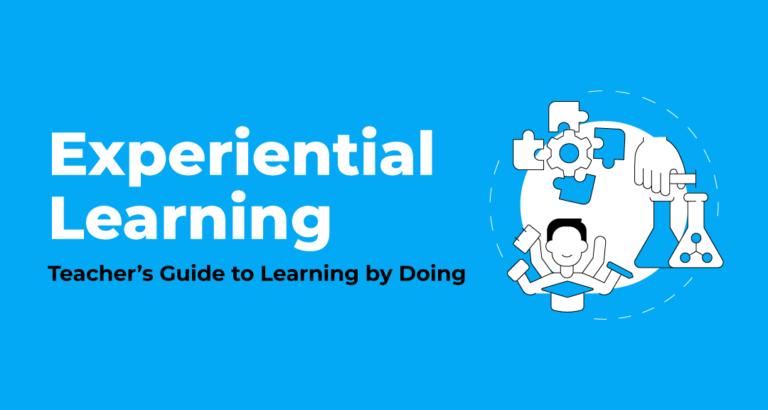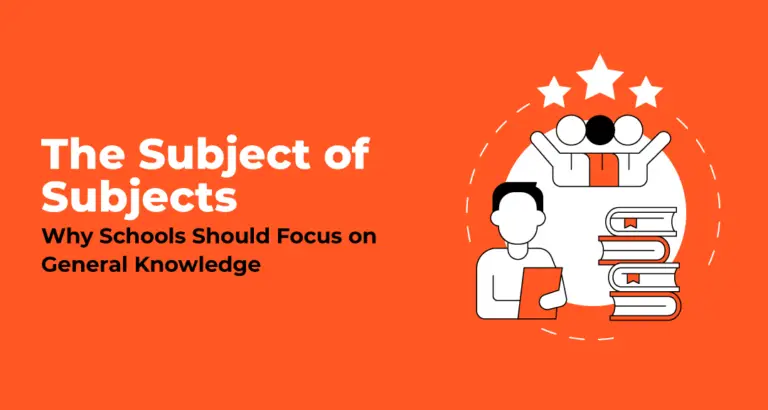Teaching with AI – Adapting Your Classroom for AI-Assisted Learning
- School Leaders, Teaching
- November 16, 2024
- VOLT Learning

As Artificial Intelligence (AI) continues to revolutionize nearly every industry, the education sector has not remained untouched. The influence of AI-assisted learning can be witnessed in modern-day classrooms worldwide. Teachers rely on this breakthrough technology to help personalize early childhood education and unlock daily teaching efficiencies.
By integrating AI into the learning environment, teachers can escape students from rote memorisation by providing immersive, personalized, adaptive and fun-filled learning experiences. This improves students’ cognitive and social skills, speech, linguistic capabilities and STEM engagement.
The benefits of AI-driven teaching are countless. Artificial Intelligence, as a facilitator, enhances learning outcomes in unimaginable ways. Its role spans from
- Administrative support by automating grading, identifying specific knowledge gaps, tracking student progress, and managing records
- Influencing classroom instructions through personalized content recommendation for effective learning outcomes as each student receives instruction at their level.
- Curating relevant study material faster from a wide range of sources, helping teachers to create engaging and structured lesson plans aligned with specific educational goals
When adopted as a learning tool inside the classroom, AI empowers teachers with predictive insights into students’ learning patterns and knowledge gaps, enabling them to tailor their teaching practices to address each student’s immediate needs. With AI-driven analytics, teachers can detect when a student struggles with a concept, needs additional resources, or would benefit from a new approach, making adaptive learning a tangible reality.
Benefits of AI-Assisted Learning in the Classroom

Let’s look at the remarkable benefits of integrating AI in the classroom.
- Personalized Learning Experiences
One size does not fit all in education, and AI makes it possible to provide tailored learning experiences for every student. AI tools can analyze students’ progress and adapt lessons to fit their pace, strengths, and areas needing improvement.
This individual approach helps students feel more confident, engaged, and empowered in their learning journey.
- Time-Saving for Teachers
Integration of Artificial Intelligence inside the classroom can help teachers reduce manual efforts by automating the task of creating objective assignments, quizzes and multiple-choice tests. Teachers with the right AI prompts can generate relevant resources based on curriculum requirements, learning objectives, and student performance data.What’s more, teachers can use AI tools to avoid repetitive and time-consuming responsibilities like scheduling, attendance tracking, report generation, sending reminders and updates, and administrative reporting.
This minimizes the administrative burden and allows teachers to devote more time to concentrating on high-impact learning instructions, thereby creating a conducive learning environment.
- Immediate Feedback
With AI-assisted learning practices, teachers provide students with instant feedback on their assignments, helping them quickly understand and correct errors.This immediacy keeps students engaged and motivated and reinforces a growth mindset in which learning from mistakes is celebrated.
- Enhanced Engagement with Interactive Tools
New technologies like AI bring interactive and immersive education to the table. Consider personal companions that can help students with specific questions, projects, or computer-generated scenarios where students can practice and learn as they go. This way, AI-assisted learning enhances the level of curiosity among students, and the willingness to learn increases compared to using more conventional methods.
- Data-Driven Insights
AI analyses learning patterns and provides teachers with the necessary data about their students’ learning processes, difficulties, and talents. It enables more rational decision-making about curriculum changes and other interventions to improve learning outcomes.
Addressing Common Concerns About AI in Education
Despite the clear advantages, teachers often have reservations about AI because of the below-mentioned concerns:
- Is AI too complex for young learners?
AI tools are designed to be intuitive and age-appropriate. Many platforms focus on user-friendly interfaces that guide students naturally, helping them understand and interact with the AI without feeling overwhelmed.Additionally, the presence of a teacher ensures young learners have the support they need to navigate AI-assisted lessons comfortably.
- Will AI usage impact academic integrity?
Many educators are opposed to using AI in education because they believe it can impact academic integrity and increase the risk of plagiarism. When students rely too much on AI-driven tools to complete their homework and assignments, their capability of independent learning, problem-solving, and creativity is impacted.However, when AI-assisted learning practices are introduced to students under the guidance of teachers using intelligent tools like VOLT AI Mate or ChatGPT, young learners playfully develop curiosity, communication, and cognitive skills. Such platforms work on the concept of storytelling, which makes complex lessons easily digestible.
- Future of teaching with AI: What lies ahead?
As AI technology evolves, its role in the classroom is expected to deepen. The future of teaching will likely include AI tools that can detect emotional cues, identify burnout signs, and foster soft skills in students.Predictive analytics will become a staple in educational planning, allowing teachers to anticipate student needs and adapt instruction accordingly. AI-powered simulations will make learning more experiential, breaking down complex subjects into engaging, understandable experiences.
Ultimately, AI will help cultivate a classroom environment that nurtures innovation, critical thinking, and collaboration—skills crucial for the world of tomorrow.
Meet VOLT AI Mate – Your Intelligent Companion
VOLT AI Mate encourages AI-assisted learning by engaging students in ways that go beyond the traditional classroom setting. With its intelligent capabilities, VOLT AI Mate personalizes the lessons and concepts interactively using animations, summaries, topic explainers, interactive activities, practice sheets and much more.
VOLT AI Mate is a free and easy-to-access tool that can be accessed by scanning a QR code given in all the new editions of VOLT Learning books in each chapter. Students can explore the tool to enhance their home learning experience, while teachers can use it to make classroom learning interactive and fun. Watch this video to learn more about this tool.



